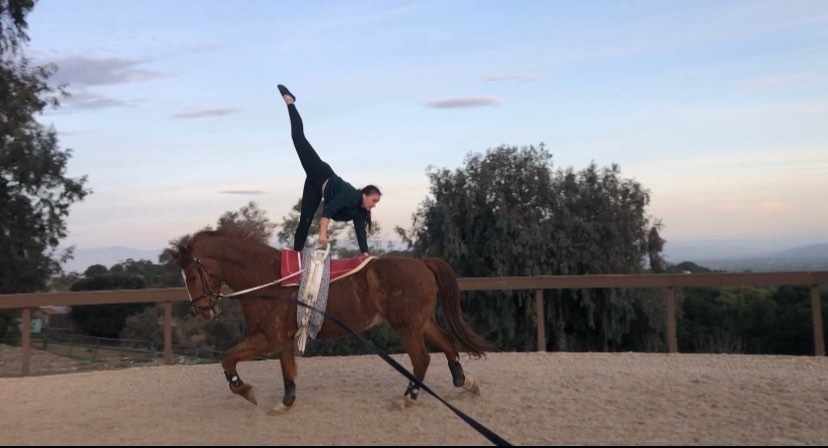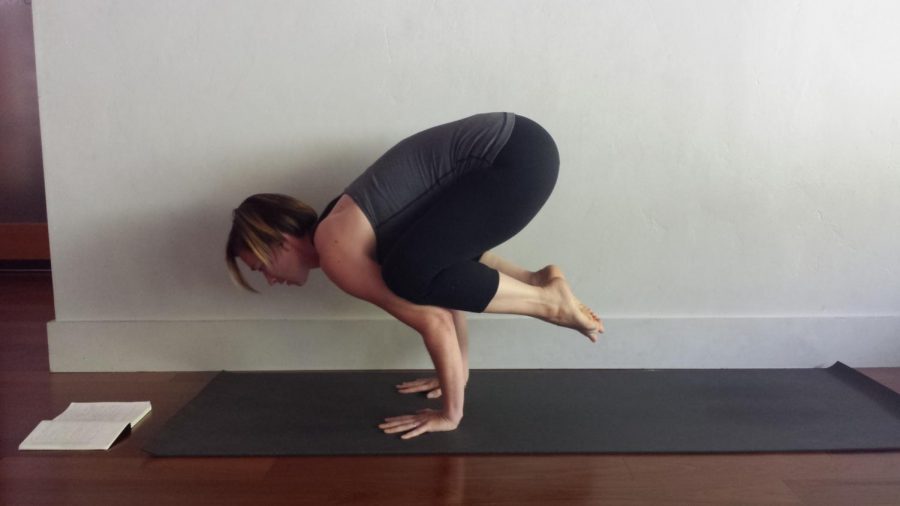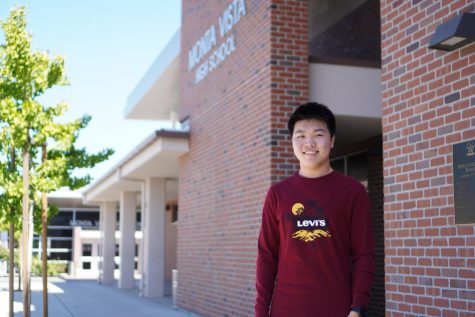Recreational sports during quarantine
MVHS students and staff safely stay active despite COVID-19 restrictions
September 24, 2020
While MVHS sports teams have been unable to practice in their usual capacity during the COVID-19 school closures, with the fall sports season postponed, many teachers and students have been pursuing sports and exercising on their own. Read below to learn how three individuals have continued to exercise despite the shelter-in-place orders.
Yoga
English teacher Vennessa Nava was introduced to yoga as a toddler. When her grandmother practiced yoga poses in the living room, Nava would always be hanging nearby.
“She’d be like, ‘Can you do this, can you do this?’” Nava said. “And then we’d do an informal little practice. Kids are so flexible, it’s enviable.”
Nava stopped practicing yoga as a child, but her interest was reignited in college after a friend encouraged her to sign up for a yoga class. During college, Nava strived to maintain a healthier lifestyle through consistent exercise. She started by making trips to the gym to do yoga before transitioning to yoga studios. Since 2012, Nava has been dedicated to practicing yoga.
Nava is currently a member of a yoga studio in Los Gatos, where over 90 classes are offered weekly. She found that after experimenting with many studios, there were noticeable tiers in quality of instruction and each studio had a different environment. Her current studio’s owner regularly invites experts and hosts workshops on a variety of yoga disciplines, helping people dig deeper into their interests.
One of Nava’s favorite yoga teachers is the official yoga instructor of the San Francisco 49ers, who has created a program revolving around functional yoga, which is based on practical, real-world movements. As an ethical practice, the studio also works with the Seva Foundation and invests in many programs including teaching yoga to cancer patients and to those who have experienced trauma.
“The studio as a whole seems to embody the principles of yoga, not just as an exercise, but as a spiritual practice,” Nava said. “That’s what drew me to stay with this particular studio.”
Nava shares that many principles of yoga can be transferred off the mat and into daily lives as well. Traditional yoga practice includes yamas, moral disciplines, and niyamas, self-disciplines. These ideological pillars range from non-violence and truthfulness to cleanliness and self-control. While the physical practice of yoga is important, these principles are what truly define yoga, according to Nava.
“Yoga practice encompasses all of these disciplines so that someone is living an ethical life and is living in a principled way,” Nava said. “Western society and appropriations of yoga strip away all of those spiritual underpinnings — those are actually what yoga is, not just ‘I’m going to exercise and sweat.’ Asana is the physical practice of yoga, and it is one among ways to practice yoga, but it’s often seen as what yoga is for people who haven’t really done the work or study of it.”
After another teacher from her studio began to host yoga lessons in a park, Nava attended and found that it was a good model since it allows for social distancing, yet individuals can still gather and exercise outdoors together. Though Nava only attended once due to time conflicts, she decided to host her own yoga sessions for a group of around six MVHS teachers each week. Over the summer, these lessons were held at Jollyman Park. However, with the onset of recent wildfires, Nava switched back to hosting the yoga class over Zoom.
To those looking to get started with yoga, Nava recommends being kind to oneself and taking it slow. Pranayama (breath) exercises are one way to bring yoga practice into day-to-day situations and Nava views them as good ways to help with stress and anxiety. Another principle Nava has recently adopted is slowing down to feel every moment of her yoga practice. She encourages a similar mindset in those looking to practice yoga as well.
“A lot of times, especially in a culture like the Bay Area, people look to who’s around them and then they want to compete with that person — they want to do as well or better than them,” Nava said. “And that’s getting caught up in ego. You’ve stopped practicing yoga when you get caught up in those kinds of mindsets. Really, [yoga] is a way to turn inward and to learn to listen and feel your own body’s individual constitution and individual sensations on any given day.”
Vaulting
Each year, junior Claire Schie works with her team to put together an equestrian vaulting performance consisting of three categories of moves performed on horseback: compulsories, individual freestyle and team freestyle.
Compulsories are moves that each contestant must perform in every routine, such as stands. Individual contestants can develop a freestyle routine and a team of two or three can create team freestyle moves together. During the shelter-in-place order, Schie has been forced to practice vaulting individually with her coach and has recently transitioned to practicing in groups of two and three.
Schie began equestrian vaulting in 2015 and had spent much of her life around horses and had practiced horseback riding before being introduced to vaulting by a friend. Each week, Schie practices vaulting three times a week at Garrod Farms. Out of the multiple moves she has performed, one of her favorites is the stand, which involves standing stationary atop a horse.
Schie begins preparing in August each year for Spring competitions. For months, she works with teammates to practice and develop routines. Schie notes that the team shares many comical moments when someone falls in a funny way or when a horse steps on someone’s foot.
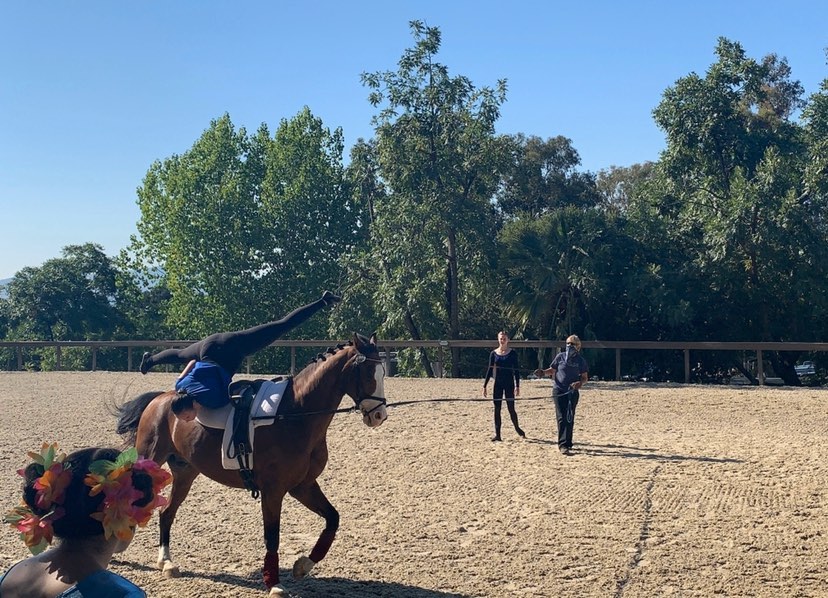
Though Schie often becomes stressed during competitions, she describes feeling extremely relieved when the competition is over and she reflects on the goals she has accomplished.
During the shelter-in-place period, practices have become more individual for Schie and her teammates. Since disinfecting has also become more important, equipment such as tacks are cleaned after each use. Regardless of the changes she has had to make to adapt to COVID-19, Schie is grateful to continue vaulting and training with her team.
“I think vaulting is definitely a very unique sport,” Schie said. “Not a lot of people are part of it. A lot of people think I’m a pole vaulter, so I have to specify it’s gymnastics on horseback. I really like how unique it is and how it’s just something different.”
Hiking
Each day, chemistry teacher Kavita Gupta meets her fitness goals by either traveling to trailheads to hike or walking 10,000 steps if she is unable to hike. Since she started hiking around 10 years ago, Gupta has loved to spend time on the trail alone without technology or distractions.
“I never used to hike before that and I thought hiking was for people who were very fit or who knew everything,” Gupta said. “Then, a couple of my friends and I, we just started walking and then we said ‘Oh, this looks like a good place to go.’ And I would just go with my friends and family and that’s how, little by little, I just loved the outdoors.”
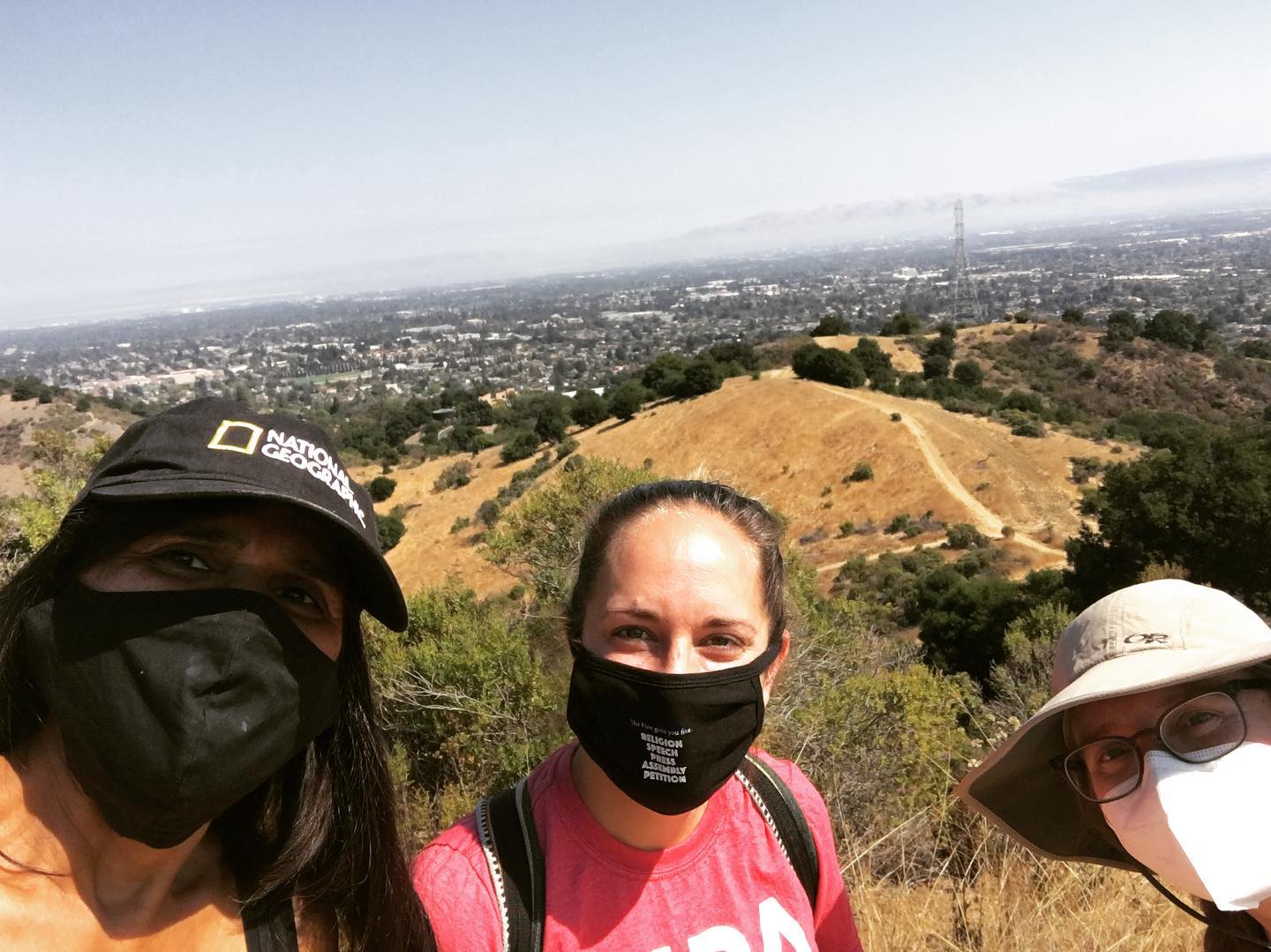
Gupta shares that she grew up surrounded by nature, so she has always had a love for it within her. The abundance of trailheads and physical proximity to nature in the Bay Area are what drew Gupta to hiking despite her initial misconceptions. One of Gupta’s favorite hikes has been at the Toyon Trail in Portola Valley. Along the trail, a swing has been installed overlooking a massive drop with a view of mountains and redwoods. On other trips, Gupta has visited Windy Hill Trail in Portola Valley and loves to explore new trailheads. Gupta’s love for nature has allowed hiking to have an increased impact on her during the shelter-in-place period.
“It has been such a gift,” Gupta said. “I would have gone crazy just being cooped up. In hiking, you can still observe social distance, you can wear masks and you’re outdoors in an open space so the risk of infection is less.”
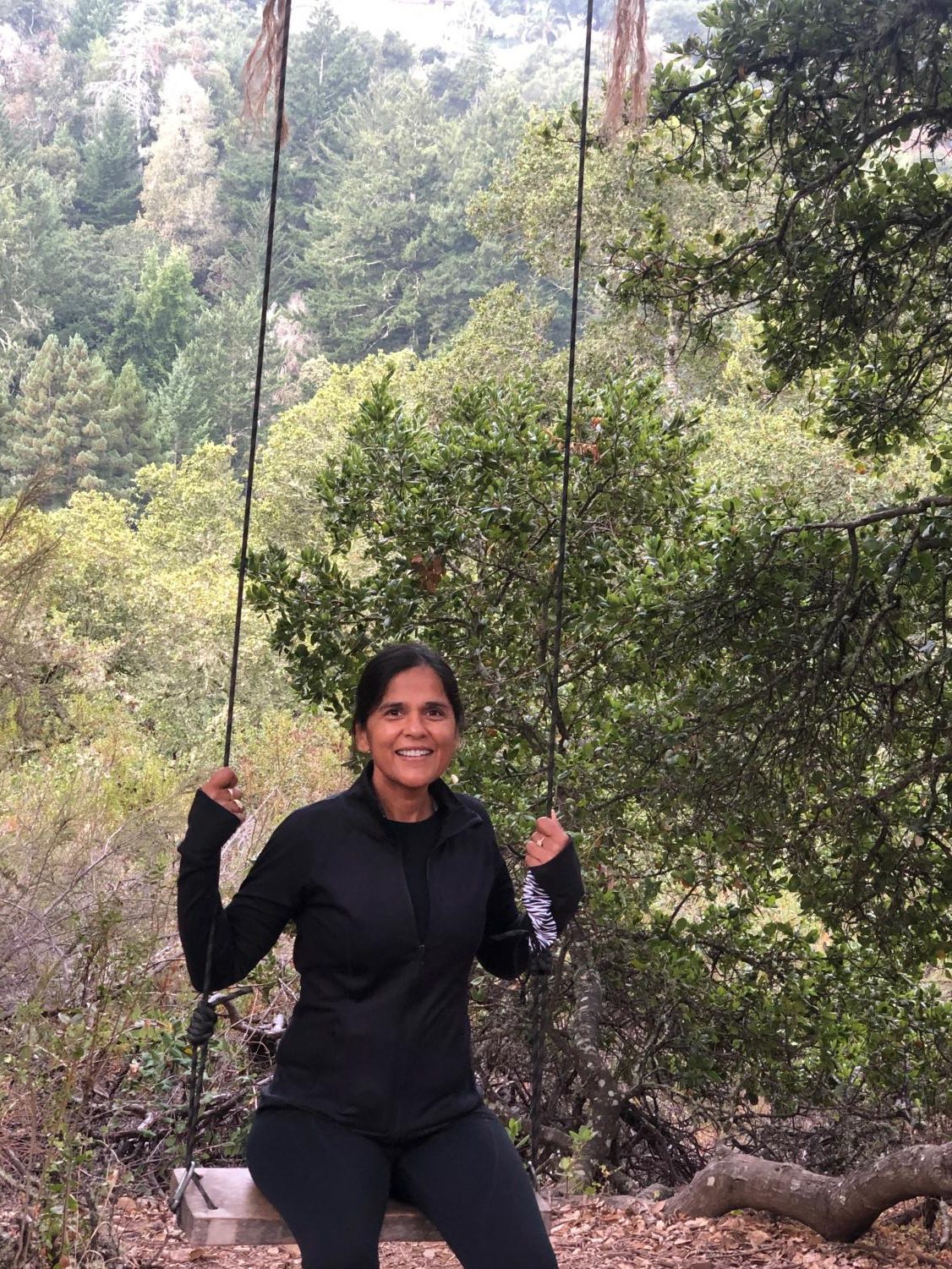
While Gupta used to make regular trips to the gym, that option is no longer available to her as a result of the COVID-19 pandemic. However, she is grateful that she can still continue to hike without compromising the health of herself and others. Gupta has noticed an increase in people going outdoors, as she now sees many people on hiking trails while she previously saw far fewer people.
Gupta recommends that everyone try out hiking, but to start small — don’t get too ambitious in the beginning. She also suggests that hikers wear proper shoes and always bring water. Most importantly, she shares the importance of preserving the trails and their beauty.
“You do not remove things and you do not trash [them],” Gupta said. “Just be a good neighbor to the surroundings and to the nature … so these [trails] can last with us for a long time.”


